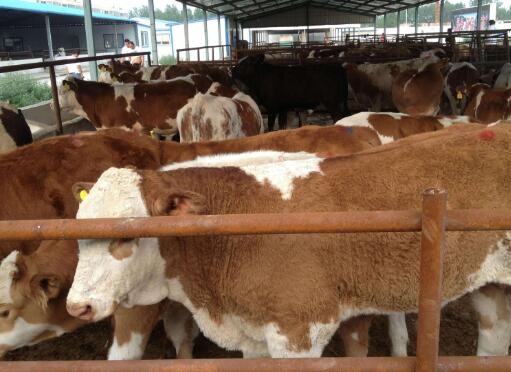
News briefing:

News briefing:
Ombilitis is a purulent gangrenous inflammation caused by bacterial infection of the broken end of the umbilical cord after the calf is born, and it is a common multiple disease in the calf. Under normal circumstances, the umbilical cord of a calf dries up, necroses, and falls off from 7 to 14 days after delivery, and the umbilical hole is closed by scarring and epithelium. Because the umbilical blood vessels of cattle are not closely connected with the tissues around the umbilical opening, after the umbilical cord is broken, the blood vessels are easily retracted and covered by amniotic membrane. However, the broken end of the umbilical cord often causes bacteria to multiply due to poor disinfection, causing inflammation, suppuration and gangrene of the umbilical cord. .
1. Causes The umbilical cord is not disinfected or is not strictly disinfected during delivery, or the umbilical cord becomes inflamed due to the sucking of calves. Improper feeding and management, unfavorable external environment, such as wet and muddy sports fields, delayed replacement of litter, poor sanitary conditions, and umbilical cord infection.
2. Symptoms The initial stage of umbilical cord inflammation is often not noticed, only calf indigestion and diarrhea are seen. With the prolongation of the course of the disease, the cow is depressed, the body temperature rises to 40 ℃-41 ℃, often reluctant to walk. The umbilical cord and tissues are swollen, the texture is hard on palpation, and the affected animal has a painful response. The broken end of the umbilical cord is moist and can be squeezed with hand to squeeze out the dirty pus, which has a foul smell, and some can not squeeze the pus because the broken end is closed, and an abscess is formed around the umbilical hole. Affected calves often have indigestion, diarrhea or swelling, bowed waist, thinness, and developmental obstruction. If treated in time, the recovery is generally good.
3. Prevention The umbilical cord should be treated and disinfected well. The umbilical cord should be cut about 5 cm away from the abdomen, and the broken end should be soaked in 10% iodine tincture for 1 minute. Maintain a good hygienic environment, the sports field should be disinfected, the bedding should be replaced in time, and 1%-2% caustic soda should be used for regular disinfection. Newborn calves should be raised in single pens to avoid sucking calves to prevent disease.
4. Treatment Eliminate inflammation and prevent inflammation from spreading.
(1) Local treatment: 1%-2% potassium permanganate can be used to clean the local area at the initial stage of the disease and rubbed with 10% iodine tincture. If there is swelling around the affected area, penicillin can be injected at 600,000-800,000 international units.
(2) When an abscess has formed, an incision should be made to drain the pus, then rinse with 3% hydrogen peroxide, and sprinkle iodine powder inside. In severe cases, the necrotic tissue can be removed surgically and coated with iodoform ether (1 part iodoform, 10 parts ether), or corroded with silver nitrate, copper sulfate, and potassium permanganate powder.
(3) Systemic treatment can be treated with sulfa, antibiotics, usually 600,000-800,000 international units of penicillin, an intramuscular injection, twice a day, three to five times in a row. If you have symptoms of indigestion, you can take 6 grams each of sulfamethoxazole and baking soda, and 5-10 tablets of yeast tablets or stomachic tablets, twice a day for three days.
Calf care technology
The calf must have colostrum within 1 hour after birth. If cows cannot eat colostrum or lack milk for some reasons, artificial milk should be used instead. Artificial milk should be prepared according to the calf's nutritional needs. After being fed, stir it evenly, and then heat it to 38~40℃ and feed it 4 to 5 times a day. After 7 to 10 days of birth, the calf can be taken with the cow to the outdoors or in the playground to exercise freely for half an hour. It can be increased to 1 to 2 hours after one month, and can be gradually extended later. Keep the calf barn clean, dry and hygienic, keep warm in winter, and ventilate and prevent heatstroke in summer. Calves must be supplied with clean water every day, so that they can drink freely. Common calf diseases include calf colibacillosis (white scour), nutritional diarrhea, calf pneumonia, etc. The specific treatment method is determined by the veterinarian according to the specific situation.
Date of opening:1970-01-01 Shop address: Main products: Store certification time:1970-01-01 08:00:00
Store Name: Principal: Contact number: email: